- Home
- W. Somerset Maugham
The Moon and Sixpence Page 3
The Moon and Sixpence Read online
Page 3
The artist who is in bondage to an urge to create is a figure who fascinated Maugham. In the Paris art colony scenes of Of Human Bondage, Fanny Price is an English woman determined to be a capable painter but she has no talent, and when her money runs out she hangs herself. The Spaniard Miguel Ajuria strives to become a published author but his superficiality dooms him to nothing more than mediocrity. Both failures show Philip Carey the futility and pain of pursuing art when one does not have the ability to convey one’s vision on canvas or the page, and he wisely abandons his goal of becoming a painter. In Maugham’s short story “The Alien Corn,” on the other hand, when the young protagonist George Bland’s dreams of being a concert pianist are shattered on being told that he will never be more than a competent amateur, he is unable to accept this failure and kills himself.
Strickland, however, achieves artistic greatness and, in Tahiti where the milieu demands little of him and with a woman who puts no ties on him, he paints his masterpiece. Something of the primal force of this last great work, painted on the walls of Strickland’s house, is conveyed to the narrator by the doctor attending the dying artist:
From floor to ceiling the walls were covered with a strange and elaborate composition. It was indescribably wonderful and mysterious. It took his breath away. It filled him with an emotion which he could not understand or analyse. He felt the awe and delight which a man might feel who watched the beginning of the world. It was tremendous, sensual, passionate; and yet there was something horrible there, too, something which made him afraid. It was the work of a man who had delved into the hidden depths of nature and discovered the secrets which were beautiful and fearful too. It was the work of a man who knew things which it is unholy for men to know. There was something primeval there and terrible. It was not human. It brought to his mind vague recollections of black magic. It was beautiful and obscene.
“Mon Dieu, this is genius.”
There, in a native hut in Tahiti, Strickland has created a work whose power reminds Dr. Coutras of Michelangelo’s ceiling in the Sistine Chapel.
In this final, monumental painting, Strickland has found the means to communicate the vision that has been tormenting him and he thus achieves liberation. Maugham wrestles with the nearly impossible task of recreating a painting in words, and his depiction is consistent with the necessarily vague illumination the narrator is given of the artist’s obsession: huge, sensual, passionate, horrible, primeval, mystical. It is Strickland’s soul in paint, and by its expression the demon has been exorcised. To underline that this masterpiece is a personal act of catharsis, rather than a wish for justification or fame, the narrator adds almost as a postscript that its creator left orders that it be destroyed after his death. This destruction is, in Mildred C. Kuner’s words, “a supreme gesture of contempt for the world’s opinion. Here is a study of revolt and ultimate freedom rivalling even the Gidean ideal.”
To remind us of the inadequacy of the world’s opinion of Strickland and his art, Maugham ends The Moon and Sixpence with the narrator’s return to London and to Amy Strickland’s comfortable middle-class home. There he finds several reproductions of her husband’s paintings placed on the walls of her drawing-room because, as she says, “they’re so essentially decorative.” Declaring that “great art is always decorative,” the American art critic Mr. Van Bushe Taylor broaches no awkward or embarrassing issues about Strickland and neither does the narrator, who notices that the figures in one of the paintings are Ata and her first son by the painter. Having told his story because he had a special knowledge of Strickland’s life and art, the narrator now suppresses that knowledge from both Amy and from the critic who is writing another bland and superficial book about them. Only the teller of the tale and the readers of Maugham’s novel understand Strickland’s art at its greatest and how little the public knows of it.
But does Maugham succeed in persuading his readers of the greatness of Strickland’s paintings or that they have seen the unique and subtle workings of the artistic temperament? If he fails to convince his readers that Strickland’s paintings are monumental works of art, he is not alone among writers. Nineteenth-century fiction focused on the life of its artist characters and rarely examined their work, and twentieth-century authors, even with increased interest in the artistic experience, have produced few credible recreations of a painting or composition or piece of sculpture. For example, Shaw’s Louis Dubedat, Theodore Dreiser’s Eugene Witla (The Genius), and Henry Handel Richardson’s Maurice Guest (Maurice Guest), notable artist figures of the period, do not in any way have their artistic work explored. D. H. Lawrence’s Sons and Lovers treats Paul Morel as a sensitive and artistic young man trying to break away from his mining community, but the reader never sees any of his work, and Joyce’s A Portrait of the Artist as a Young Man illustrates the gestation of an artistic temperament without showing any of the results of the birth of the artist.
It should hardly be surprising that wordsmiths have rarely succeeded in recreating the work of another art form in their writing. When the effect of a great poem can never be fully explained even in prose nor its meaning wholly translated from its particular literary form, how much more difficult it is to render color, shape, movement, and sound in words. In the end the writer most often falls back on metaphor, saying one thing in terms of something else, and this rarely captures the elusive uniqueness of the work described. Thus the impossibility of the music reviewer trying to describe the full effect of hearing a Mozart string quintet superbly played in the concert hall, or the futility of the art critic writing of the showing of a new Jackson Pollock or Kandinsky. Skillful writers can enhance and elevate much of lived experience—Norman Mailer’s description of the boxing match between Muhammed Ali and George Foreman in Zaire was, for example, arguably better than the fight itself—but a truly great work of art can never be reproduced in another medium.
Maugham, it seems, never assumed that his descriptions of Strickland’s paintings would have a profound, direct impact on his readers, and so he attempts to persuade them of his artist’s genius through the testimonies of a number of witnesses. Chief among them, of course, is the narrator, who, acting as a mediator between the conventional London society and the painter who turns his back on it, records the recollections of a wide variety of observers: Rose Waterford, Dirk Stroeve, Captain Nichols, Captain Brunot, Tiaré Johnson, and Dr. Coutras. Though the narrator attempts to put their observations of Strickland into evocative word pictures, readers ultimately have to accept on trust that their awe of the man’s art is well founded.
Readers have generally appreciated that Maugham cannot be expected to reproduce the power of Strickland’s paintings in words, but for many critics the great failing of The Moon and Sixpence is the lack of real insight into the artistic temperament and the creative process. An early reviewer, Robert M. Lovett, for example, argued that the painter’s conversion to art is too sudden and ungrounded and that this leaves his character too vague: “The one thing interesting above all, we are not allowed to see: through what fiery inner struggle did Strickland break loose to follow his ambition, and what innate chemistry of soul caused his sudden lapse into the freakish behavior that alone characterises his genius?” Katherine Mansfield went beyond Lovett and criticized the absence of any deep probing of the painter’s mind throughout the novel. Maugham failed, she said, to reveal enough of what makes the artistic temperament, that extraordinary kind of sensitivity or perception that makes the artist a unique man or woman. “We must be shown,” she said, “something of the workings of his mind; we must have some comment of his upon what he feels, fuller and more exhaustive than his perpetual ‘Go to hell.’ If to be a great artist were to push over everything that comes in one’s way, topple over the table, lunge out right and left like a drunken man in a café and send the pots flying, then Strickland was a great artist. But great artists are not drunken men; they are men who are divinely sober.”
If the workings of Strickland’s mi
nd remain opaque, much of the blame must lie with Maugham’s use of a narrator, a device which always distances readers from the characters and experiences being described. The first-person voice was a narrative strategy that Maugham employed frequently over his long career and which he honed to a fine edge. Half of his prodigious output of short stories are told in this way, and in Cakes and Ale the various characters, settings, and chronological leaps are seamlessly woven together in the memory of a narrator called “Willie Ashenden.” Similarly, Larry Darrell’s search for spiritual truth in The Razor’s Edge, a wandering tale that takes a number of characters from America to Europe and India over many years, is told by a first-person narrator, an urbane and observant novelist.
Anthony Burgess considered the Maugham persona, whether it is Ashenden, the unnamed narrator of the short stories, or the “gentleman in the parlor” of the travel books, to be the author’s finest creation. V. S. Pritchett called him “the Great Dry Martini in person,” and in the later works Maugham’s narrator is a cosmopolitan, worldly-wise raconteur equally at home in London’s Mayfair society, the Riviera, the South Pacific, or the Far East. He can tell of sailing to India by P & O liner or of traveling across Burma by ox-cart, and he can recall tiffin at the Raffles Hotel in Singapore or cocktails with beachcombers in Papeete. He is the congenial gentleman recounting a tale—with all its digressions, interjections, and hypotheses about human nature—in front of the fireplace over cigars and port.
Maugham had rarely used the first-person voice before writing The Moon and Sixpence, however, and his narrator here is not the shrewd and experienced observer of life of his later works, but a naive, somewhat priggish and pretentious young man. His experience of the world is limited and his outlook narrow. This makes him, in part, a foil for the impulsive, passionate and amoral Strickland, much as the English narrator of Nikos Kazantzakis’s Zorba the Greek is the antithesis of the fiery, Mediterranean Zorba. Indeed, the teller of the tale in The Moon and Sixpence confesses to enjoying someone who can give him “a Roland for my Oliver.”
Seeing himself as “Oliver” to Strickland’s “Roland,” legendary figures from the twelfth-century epic poem Chanson de Roland, suggests that the narrator is playing a more prominent and intrusive role in The Moon and Sixpence than is usual for the teller of a tale. In recent years, when much of literary criticism has focused on metafiction, voice, and self-referential narrative, this prominence has led scholars to suggest that Maugham’s novel is as much about the narrator as about the artist. Sheldon W. Liebman, for example, argues that the narrator does not confine himself to the customary activities of observation, analysis, and discovery, but goes far beyond this descriptive role into speculation, interpretation, and judgment. Because he has only a limited direct experience of Strickland—“I am exasperated by the fragmentariness of the facts at my disposal”—he is reduced to conjecturing, signaled by his frequent use of “may be,” “I wonder,” “I suppose,” “it appears,” “it seemed to me,” “might have been,” and other speculative phrases. Seeing the man’s paintings for the first time, he reports that “I fancy that Strickland saw vaguely some spiritual meaning in material things,” that his interpretation is perhaps “fanciful,” and that he “fancied” that the art was the result of a great effort to express its creator’s soul. Hearing of Strickland’s Tahitian paintings from Dr. Coutras, the narrator tells us that “working silently, knowing that it was his last chance, I fancied that here he must have said all that he knew of life and all that he divined. And I fancied that perhaps here he had at last found peace” (emphasis added).
The narrator’s portrait of Strickland and his art, concludes Liebman, is thus highly unreliable, and he goes further to maintain that it is very largely a projection of the storyteller’s own needs, values, and expectations. Strickland is “a cipher onto which anyone may project his own fancies” and the novel is really an exploration of “the process of projection, the biases from which it derives, the moral shallowness that it reflects, and the consequences that it engenders.” The subtlety of this examination, says Liebman, is worthy of Henry James, and makes The Moon and Sixpence one of the best works of fiction of the twentieth century.
Though Liebman’s thoughtful dissection of the novel’s unreliable narrative, revealing as it does the complexity of Maugham’s writing, is convincing, his claim that Strickland is merely a cipher is unlikely to persuade many readers. In a carefully reasoned response to Liebman, J. David Macey argues that the narrator’s inability to penetrate deeply into the painter’s psyche—and the resulting shift of his proposed biography into autobiography and myth-making—is inevitable because true artistic genius is beyond his comprehension or that of any conventional person. Thus when Maugham places his narrator back in Amy Strickland’s drawing room, that is, back in the civilized London society from which he started, he is reminding his readers that Strickland had to leave civilization in order to create his great painting. Why, then, should we be surprised if civilization cannot understand his work? “Strickland’s paintings,” says Macey, “possess the virtue of originality, but originality has no place in civilized society, which depends for stability on the reproduction of the familiar patterns embodied by myth and narrative fiction. . . . Strickland’s greatness consists in having created works that cannot be described in the ‘civilized’ vocabulary of the drawing room because civilization has no language adequate to the genuine and terrifying originality of true artistic genius.”
Behind the enigma of Strickland and the narrator who attempts to understand his art is, of course, the important question of where Maugham himself stands on these matters. According to Macey, if biography, which The Moon and Sixpence purports to be, “is an indirect form of self-expression, then the novel points not outward, to the receding figure of Charles Strickland, but inward, to the fictional narrator and, beyond, to the novelist whom the narrator both does and does not represent.” Determining the degree to which the narrator does in fact speak for the author, and why Maugham would choose to write a novel from behind a narrative mask for the first time since 1898, is essential in two ways: it helps to explain where Maugham himself stands in regard to Strickland’s behavior and art, and it accounts for the apparently conflicting themes of The Moon and Sixpence and Of Human Bondage, published only four years apart.
One must always exercise great caution in associating a fictional narrator with his or her author, but we know that Maugham’s storytellers were often autobiographical and grew increasingly to resemble him as he aged. Eleven years after writing The Moon and Sixpence, he gave the narrator of Cakes and Ale the name “Willie Ashenden,” “Willie” being the name by which Maugham was known to his friends and “Ashenden” the surname of a family he knew as a boy in Kent. It was the name he had used in 1928 as the title of his collection of short stories based on his espionage experiences in the Great War, and when he introduced the film Trio in 1950, he told his audience: “if you like to take the character of Ashenden as a flattering portrait of the old party who stands before you, you are perfectly at liberty to do so.” By the time he came to write The Razor’s Edge, in 1944, he threw off the mask and called his narrator, a cosmopolitan novelist, simply “Mr. Maugham.”
The narrator of The Moon and Sixpence is unnamed but readers can be forgiven for seeing him as a young version of the author. Like Maugham, he has been a medical student at St. Thomas’s Hospital and lived in flat near Victoria Station. He too has enjoyed acclaim for his first novel and, now a professional author, he also has been drawn into the London literary/social world. Just as Maugham was pursued by the lion-hunting hostesses of his youth—notably Sibyl Colefax and Emerald Cunard—the young writer in The Moon and Sixpence is taken up by the socially ambitious Amy Strickland.
On closer examination, it is clear that Maugham is standing somewhat back of the narrator, with as much of himself in Strickland as in his storyteller. At one point, for example, the narrator says to the artist: “You evidently don’t beli
eve in the maxim: Act so that every one of your actions is capable of being made into a universal rule.” Strickland replies that it is “rotten nonsense,” voicing Maugham’s own opinion, as recorded in his A Writer’s Notebook: “One of the commonest errors of the human intelligence is to insist that a rule should be universally applicable.” The relationship between Maugham and his amoral artist-hero is further underlined when the narrator explains that “in his rogues the writer gratifies instincts deep-rooted in him, which the manners and customs of a civilized world have forced back into the recesses of the subconscious.” The expression of these instincts in his fiction, he says, gives the author “a sense of liberation.”
Maugham’s portrayal of aspects of himself in both the intense, antisocial Strickland and the restrained, conventional narrator is a reflection of his ambivalence about his own life and work at that time. He had ended Of Human Bondage, written as a form of catharsis, with the autobiographical Philip abandoning his dreams of art and world travel in order to settle down to an ordinary career as a country doctor married to the maternal Sally Athelny. At the end of a long search for meaning in his life, he has recognized that “the simplest pattern, that in which a man was born, worked, married, had children, and died, was likewise the most perfect.” The marriage was, Maugham later wrote, a picture of the kind of union that in 1913 he thought he would like to make, and he came to realize that most readers found it the most unconvincing part of the novel.

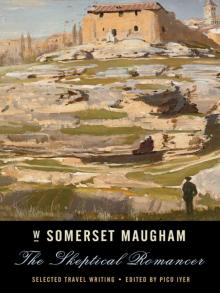 The Skeptical Romancer: Selected Travel Writing
The Skeptical Romancer: Selected Travel Writing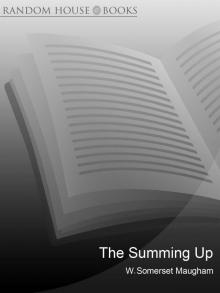 The Summing Up
The Summing Up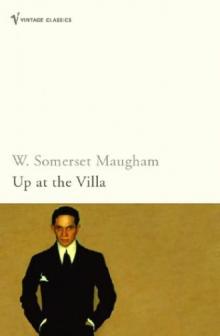 Up at the Villa
Up at the Villa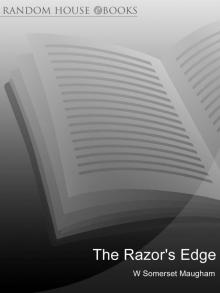 The Razor's Edge
The Razor's Edge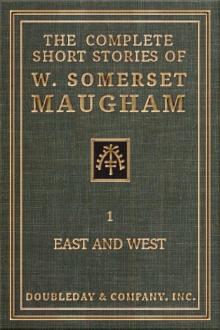 The Complete Short Stories of W. Somerset Maugham: East and West (Vol. 1 of 2))
The Complete Short Stories of W. Somerset Maugham: East and West (Vol. 1 of 2))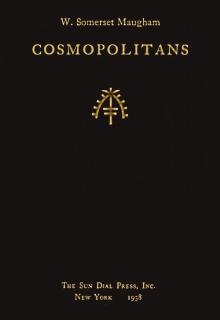 Cosmopolitans
Cosmopolitans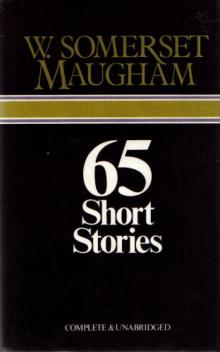 65 Short Stories
65 Short Stories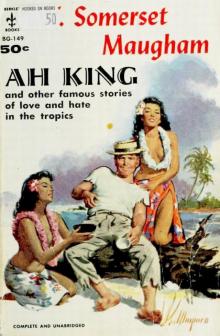 Ah King (Works of W. Somerset Maugham)
Ah King (Works of W. Somerset Maugham)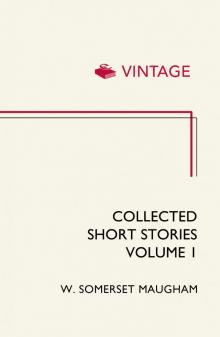 Collected Short Stories: Volume 1
Collected Short Stories: Volume 1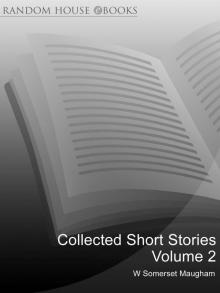 Collected Short Stories Volume 2
Collected Short Stories Volume 2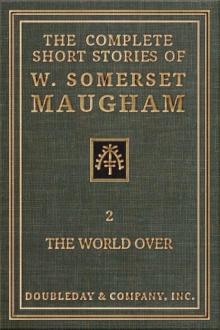 The Complete Short Stories of W. Somerset Maugham - II - The World Over
The Complete Short Stories of W. Somerset Maugham - II - The World Over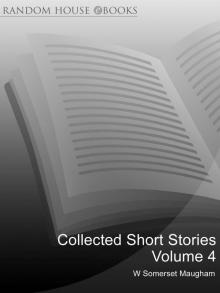 Collected Short Stories Volume 4
Collected Short Stories Volume 4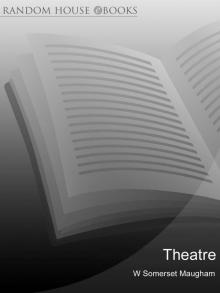 Theatre
Theatre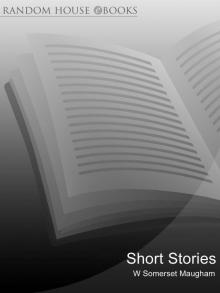 Short Stories
Short Stories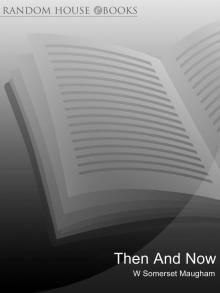 Then and Now
Then and Now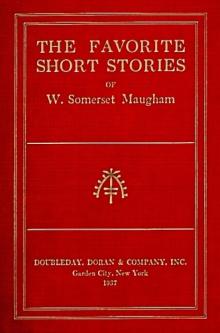 The Favorite Short Stories of W. Somerset Maugham
The Favorite Short Stories of W. Somerset Maugham Of Human Bondage
Of Human Bondage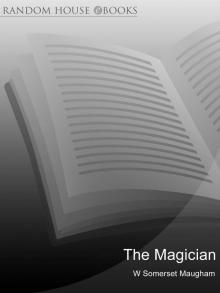 The Magician
The Magician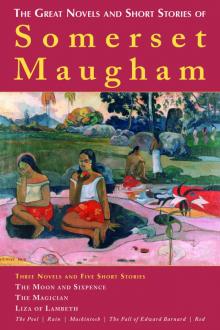 The Great Exotic Novels and Short Stories of Somerset Maugham
The Great Exotic Novels and Short Stories of Somerset Maugham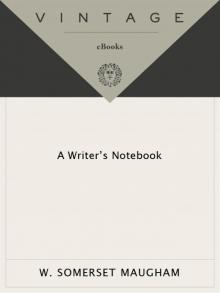 A Writer's Notebook
A Writer's Notebook Christmas Holiday
Christmas Holiday The Making of a Saint
The Making of a Saint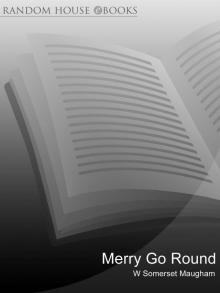 Merry Go Round
Merry Go Round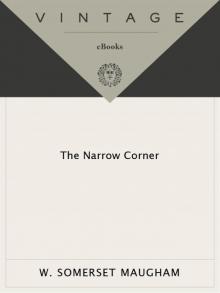 The Narrow Corner
The Narrow Corner Collected Short Stories Volume 3
Collected Short Stories Volume 3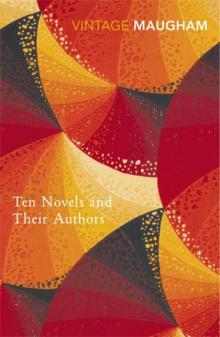 Ten Novels and Their Authors
Ten Novels and Their Authors Ashenden
Ashenden The Moon and Sixpence
The Moon and Sixpence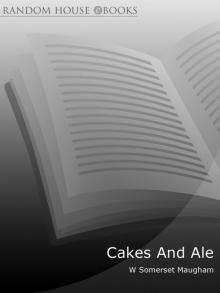 Cakes and Ale
Cakes and Ale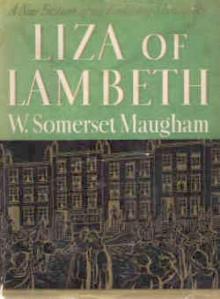 Liza of Lambeth
Liza of Lambeth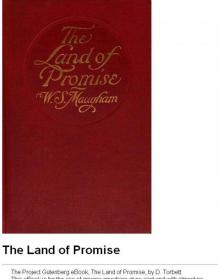 The Land of Promise: A Comedy in Four Acts (1922)
The Land of Promise: A Comedy in Four Acts (1922) A Writer's Notebook (Vintage International)
A Writer's Notebook (Vintage International)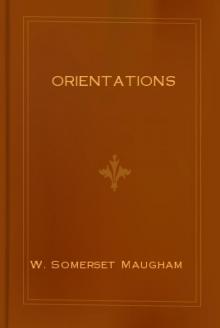 Orientations
Orientations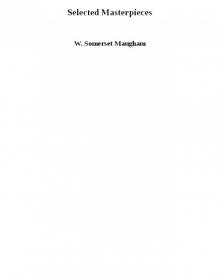 Selected Masterpieces
Selected Masterpieces Mrs Craddock
Mrs Craddock The Skeptical Romancer
The Skeptical Romancer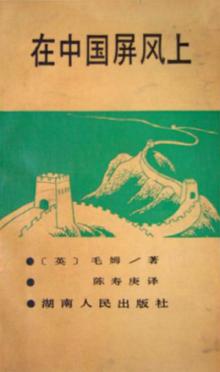 On a Chinese Screen
On a Chinese Screen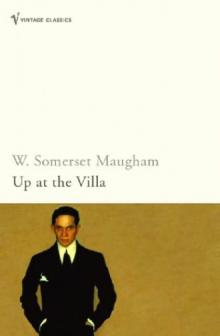 (1941) Up at the Villa
(1941) Up at the Villa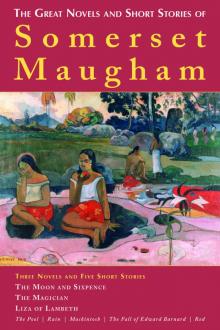 The Great Novels and Short Stories of Somerset Maugham
The Great Novels and Short Stories of Somerset Maugham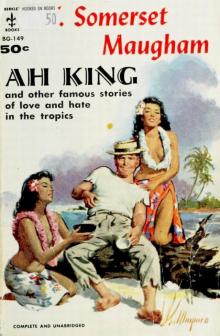 Ah King
Ah King The Explorer
The Explorer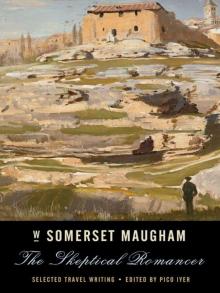 The Skeptical Romancer: Selected Travel Writing (Vintage Departures)
The Skeptical Romancer: Selected Travel Writing (Vintage Departures) The Complete Short Stories of W. Somerset Maugham - I - East and West
The Complete Short Stories of W. Somerset Maugham - I - East and West